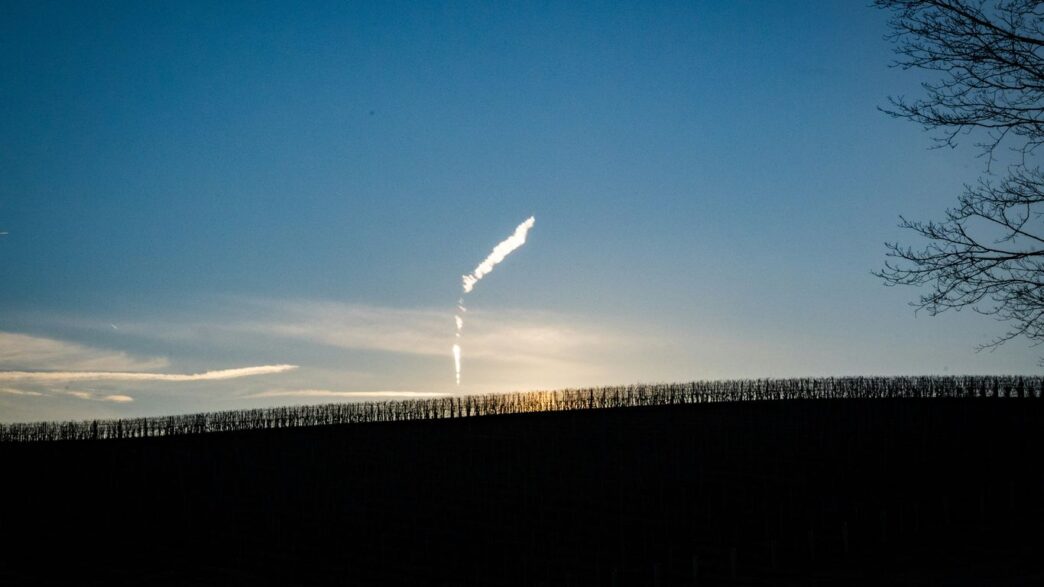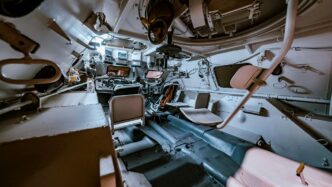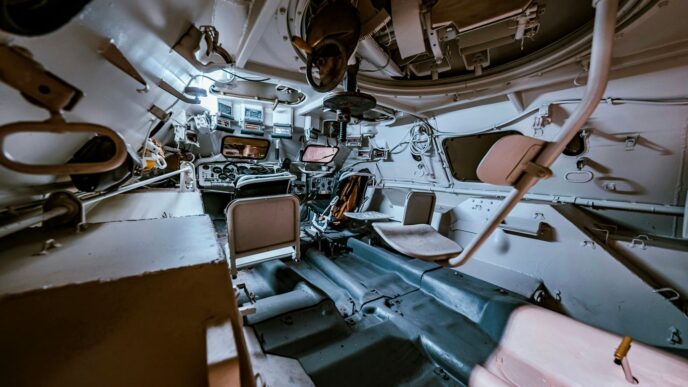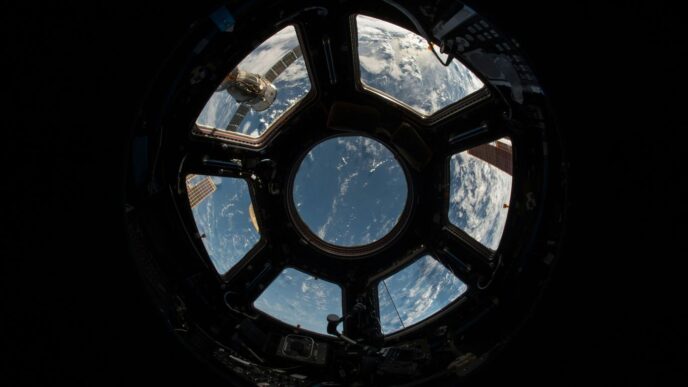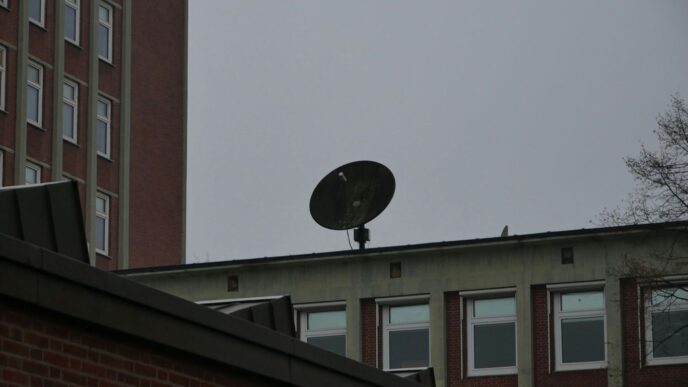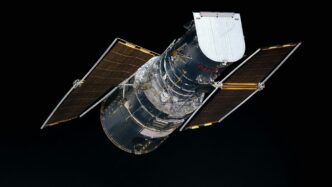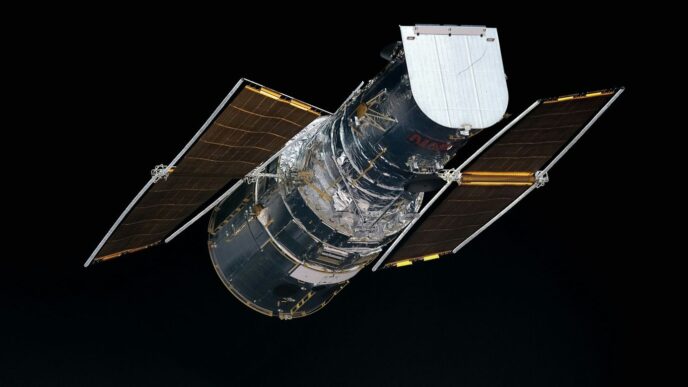Starship Flight 7: A Step Forward in Reusability
Flight 7 of Starship was a big deal, not just for what it did, but for what it showed us about getting closer to reusing these massive rockets. It’s easy to think progress is a straight line, but with something as complex as Starship, it’s more like a series of steps, some forward, some sideways, all teaching us something. This flight really hammered home that putting actual hardware through its paces in space is the quickest way to learn how all the pieces work together.
Booster Catch Success Reinforces Recovery Systems
One of the most talked-about moments from Flight 7 was the successful catch of the Super Heavy booster. This wasn’t just for show; it’s a critical step towards making Starship fully reusable. The "chopsticks" on the launch tower, which are designed to grab the booster as it returns, worked as intended. This success validates the complex engineering behind the recovery system and shows that catching a rocket is becoming a reality, not just a concept.
Ship’s Ascent and Separation Dynamics
During the ascent, the Starship upper stage performed as expected, separating from the booster cleanly. Engineers were watching the dynamics of this separation very closely. Understanding how the two vehicles behave during this high-stress event is key to ensuring both can survive the journey and return safely. The data gathered here helps refine the separation sequence for future flights, making it smoother and more reliable.
Lessons Learned from In-Flight Anomalies
Even though Flight 7 had some major successes, it wasn’t without its challenges. There were in-flight anomalies, which is pretty standard for test flights of this scale. These unexpected events are where the real learning happens. Instead of seeing them as failures, SpaceX views them as opportunities to understand the limits of the system and identify areas for improvement. Analyzing the data from these anomalies is the primary way they’ll make Starship even better for the next flight.
Key Upgrades Incorporated for Flight 7
Flight 7 wasn’t just another test; it was a rolling laboratory for some pretty significant hardware tweaks. SpaceX really focused on making the Starship upper stage, the ‘Ship,’ more robust and capable.
Block 2 Ship Enhancements
One of the big changes you’ll see on the Block 2 Ship involves the forward flaps. They’ve been made smaller and moved closer to the tip of the vehicle, away from the main heat shield. The idea here is to cut down on how much heat they have to deal with during re-entry, which also simplifies the parts underneath and the protective tiles. Speaking of heat shields, this version uses the newest generation of tiles, and get this, it even has a backup layer in case some tiles don’t quite make it or get damaged.
Propulsion System Modifications
The engine bay got a serious overhaul too. They’ve managed to pack in about 25 percent more propellant, which is a pretty big jump. To keep things running smoothly, the feedlines are now vacuum-jacketed, and there’s a whole new fuel feedline setup specifically for the Raptor vacuum engines. Plus, a revamped propulsion avionics module is now in charge of managing the vehicle’s valves and reading all the sensor data. These changes are aimed at boosting overall performance and allowing for longer missions in the future.
Launch and Catch Tower Improvements
It wasn’t just the Starship itself that saw upgrades. The launch and catch tower, specifically OLIT-1, also received some attention. Protections were added to sensors that had issues during Flight 6, which caused a mission divert. These improvements are all about making the ground support systems more reliable for those critical launch and recovery phases.
Mission Objectives and Payload Considerations
Flight 7 had a few key things SpaceX wanted to check off the list, beyond just getting the rocket off the ground and seeing how it flew. They were really trying to push the envelope with what Starship could do.
Starlink Simulator Deployment Attempt
One of the big goals was to test out deploying satellites. They loaded up the Starship with 10 dummy Starlink satellites. These weren’t real, just about the same size and weight as the next-gen ones. The idea was to see if Starship could act like a delivery truck in space, dropping them off on a suborbital path. This was the first real attempt at a satellite deployment mission. Unfortunately, like the ship itself, these simulators didn’t make it back.
In-Space Engine Relight Experiment
Another important objective was to see if Starship’s engines could be fired up again after being in space. This is a pretty big deal for future missions, especially if Starship needs to maneuver or slow down in orbit or on its way to the Moon or Mars. They planned to relight one of the Raptor engines. This kind of test is vital for proving the system’s reliability for longer journeys.
Payload Capacity and Future Missions
This flight also gave them more data on how much Starship can actually carry. With the added propellant and the simulator satellites, the ship was heavier and flew a bit differently than before. Understanding this payload capacity is key for planning all sorts of future missions, from sending more Starlinks into orbit to eventually carrying cargo and people to other planets. The data from this flight helps them figure out what Starship can realistically haul and how far it can go.
Investigating the Rapid Unscheduled Disassembly

So, Flight 7 didn’t quite go as planned, did it? We saw what SpaceX calls a ‘rapid unscheduled disassembly,’ which is a polite way of saying the Starship broke apart. It happened after the ship had separated from the booster and was on its way up.
Telemetry Analysis and Root Cause Identification
What we’ve pieced together from the data suggests a fire started in the back of the ship, in an area they call the ‘attic.’ This is basically an unpressurized space between the big liquid oxygen tank and the heat shield. It seems like there was a leak of fuel or oxygen in there, which built up pressure. The leading theory points to a harmonic response in the propulsion system that was much stronger than what they saw in tests, stressing some hardware and causing those leaks. This led to flashes, then sustained fires, and eventually, the ship’s engines started shutting down. Communication was lost around 8 minutes and 20 seconds into the flight, and the vehicle broke apart a few minutes later during its descent. The onboard safety system did activate as expected, which is a good sign, even though the ship was lost.
FAA Investigation and Regulatory Oversight
Of course, when something like this happens, the Federal Aviation Administration (FAA) gets involved. They’re overseeing SpaceX’s investigation into what went wrong. It’s a pretty standard procedure to make sure everything is looked at thoroughly. SpaceX is working with the FAA to get the go-ahead for the next flight, which involves either closing out this mishap investigation or getting a flight safety determination. Other agencies like NASA and the National Transportation Safety Board are also part of the review process.
Corrective Actions for Future Flights
SpaceX isn’t just sitting around; they’re already making changes. They’ve done some extended engine tests on the ground to try and recreate the issues they saw. Based on that, they’re tweaking the fuel lines, adjusting how they handle propellants, and changing the engine thrust targets. They’re also adding more vents and a new system to the ‘attic’ area to make it more resistant to leaks and fires. For later versions of Starship, they’re planning on using a new engine that will reduce the size of that attic space and get rid of some of the parts that could potentially leak. It’s all about learning from what happened and making the next flight safer and more successful.
The Iterative Development Process
Embracing Unpredictability in Testing
Look, spaceflight is complicated. Starship’s seventh flight test really hammered that home. It wasn’t a perfectly smooth ride, but that’s kind of the point with these test flights, right? You put this massive, complex machine into the actual flight environment, and it shows you what works and, more importantly, what doesn’t. This kind of real-world testing is the fastest way to learn how all those thousands of parts actually behave together when they’re trying to get to space. It’s not about getting it perfect the first time; it’s about getting it up there, seeing what happens, and then figuring out how to make it better for the next go-around. The goal is still full and rapid reusability, and each flight, even the ones with unexpected turns, gets us closer.
Data Review and Continuous Improvement
After Flight 7, like after every flight, the data review is already in full swing. It’s a deep dive into everything the vehicle was doing, from the moment it lifted off to… well, to the end. This isn’t just about finding the cause of any specific problem; it’s about understanding the whole system. We’re looking at telemetry, sensor readings, camera feeds – all of it. This information is gold. It tells us where the weak spots are, what needs tweaking, and what we can rely on. The team is already working on fixes and upgrades for the next flight based on what they’re learning. It’s a constant cycle: build, fly, learn, improve, repeat.
Preparing for the Next Starship Flight
And you know what? They’re already getting ready for the next one. The booster and ship for Flight 8 are built and are going through pre-launch checks. This rapid pace is what makes Starship development so unique. They aren’t waiting around. They’re taking the lessons from Flight 7, implementing the changes, and getting the next vehicle ready to fly. It’s a testament to the iterative process – you don’t stop; you just keep pushing forward, learning from every single test. It’s all part of building a fully reusable transportation system for space.
Safety Protocols and Debris Management
Pre-Planned Response to Anomalies
When things don’t go exactly as planned, and let’s be honest, with rocket tests, that’s pretty common, having a solid plan in place is key. For Starship Flight 7, SpaceX had a whole system worked out with the FAA and air traffic control before the launch. This plan is all about making sure that if something goes wrong, like debris falling where it shouldn’t, everyone knows what to do. The goal is always to keep people and property out of harm’s way. This involves setting up specific zones where debris is expected to land and having procedures to manage aircraft traffic if those zones are breached. It’s a lot like having a fire drill, but for rockets.
Debris Hazard Area and Public Safety
Before any flight, a "hazard area" is defined. This is the zone where debris is anticipated to fall. For Flight 7, there were reports that some pieces of the Starship vehicle ended up outside this pre-defined area. This triggered the activation of a "Debris Response Area" by the FAA. Think of it as a temporary no-fly zone for planes in the sky, and a heads-up for folks on the ground. While there were no reported injuries, a car on the Turks and Caicos Islands did sustain minor damage. This highlights the importance of these hazard areas and the response plans. It’s a constant balancing act between pushing the boundaries of spaceflight and making sure the public stays safe.
International Coordination for Recovery
Sometimes, debris can end up in unexpected places, even crossing international borders. After Flight 7, SpaceX worked closely with the government of Turks and Caicos, as well as the United Kingdom, to help with the cleanup and recovery of any pieces that landed there. This kind of international cooperation is pretty important. It shows that when space missions have a global reach, the safety and recovery efforts need to be coordinated across different countries. It’s not just about launching a rocket; it’s about being a good neighbor, both on Earth and potentially beyond.
So, What’s Next?
Alright, so Flight 7 didn’t go exactly as planned, but that’s kind of the point with these test flights, right? It’s like trying to bake a complicated cake for the first time – sometimes it burns, sometimes it’s a bit lopsided, but you learn what not to do next time. The booster catch was a win, showing that part is getting pretty solid. The ship’s issues, though? That’s where the real work is now. SpaceX is already digging into the data, figuring out what went wrong with that fire and how to stop it from happening again. They’ve got plans for new vents and purge systems, and they’re already prepping the next rocket, Flight 8. It’s all about that quick learning loop. They’re not waiting around; they’re building, testing, breaking, and fixing, all to get this giant rocket ready for whatever comes next, whether that’s going to orbit or eventually, somewhere much further.


